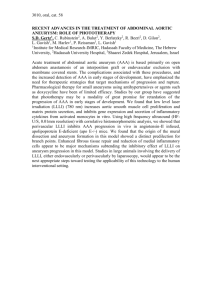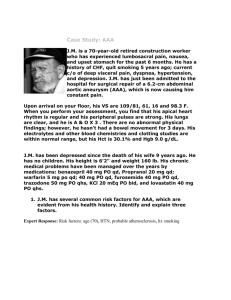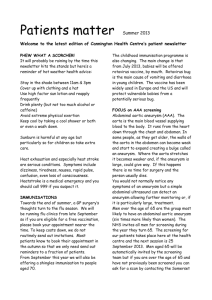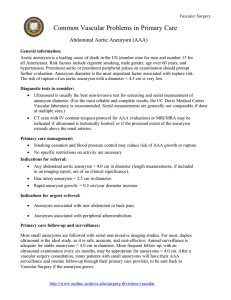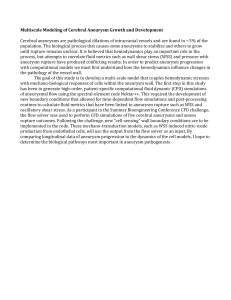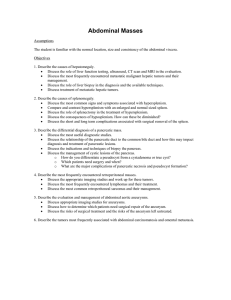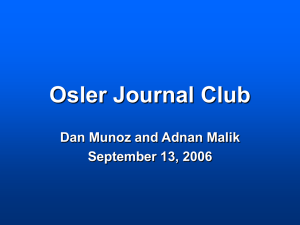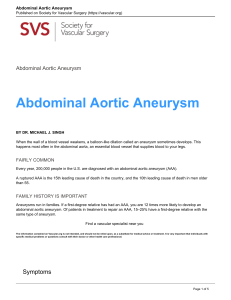Fluid Structure Interaction (FSI) Modeling of Abdominal Aortic Gopinath Jayakumar,* Hootan Mehraein
advertisement
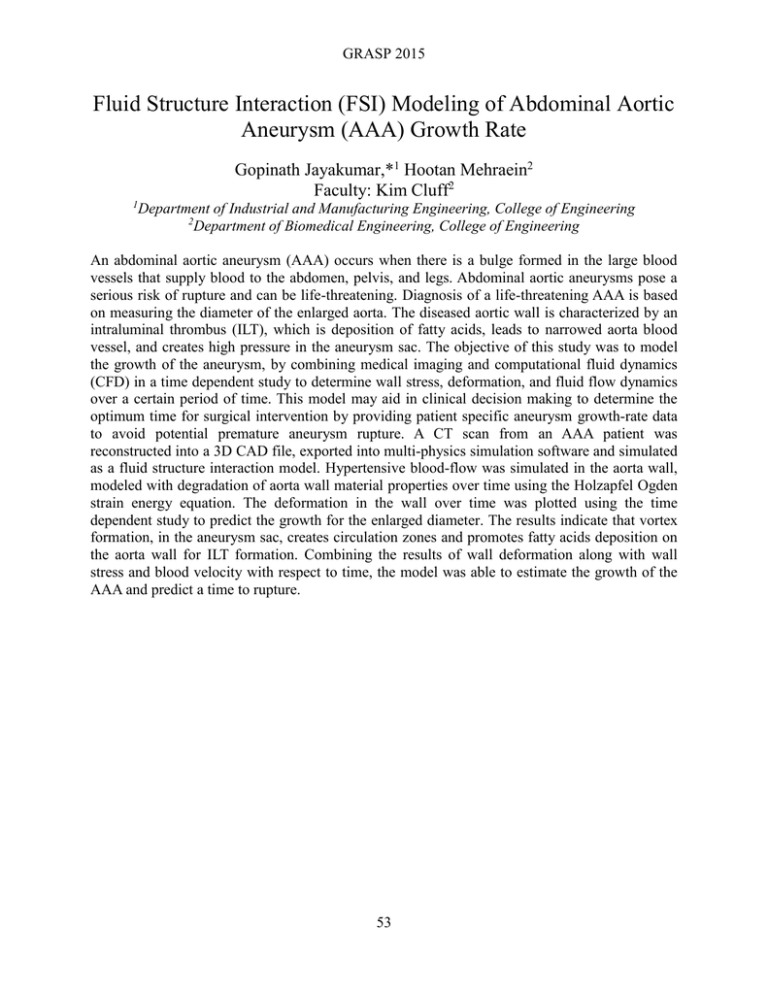
GRASP 2015 Fluid Structure Interaction (FSI) Modeling of Abdominal Aortic Aneurysm (AAA) Growth Rate 1 Gopinath Jayakumar,*1 Hootan Mehraein2 Faculty: Kim Cluff2 Department of Industrial and Manufacturing Engineering, College of Engineering 2 Department of Biomedical Engineering, College of Engineering An abdominal aortic aneurysm (AAA) occurs when there is a bulge formed in the large blood vessels that supply blood to the abdomen, pelvis, and legs. Abdominal aortic aneurysms pose a serious risk of rupture and can be life-threatening. Diagnosis of a life-threatening AAA is based on measuring the diameter of the enlarged aorta. The diseased aortic wall is characterized by an intraluminal thrombus (ILT), which is deposition of fatty acids, leads to narrowed aorta blood vessel, and creates high pressure in the aneurysm sac. The objective of this study was to model the growth of the aneurysm, by combining medical imaging and computational fluid dynamics (CFD) in a time dependent study to determine wall stress, deformation, and fluid flow dynamics over a certain period of time. This model may aid in clinical decision making to determine the optimum time for surgical intervention by providing patient specific aneurysm growth-rate data to avoid potential premature aneurysm rupture. A CT scan from an AAA patient was reconstructed into a 3D CAD file, exported into multi-physics simulation software and simulated as a fluid structure interaction model. Hypertensive blood-flow was simulated in the aorta wall, modeled with degradation of aorta wall material properties over time using the Holzapfel Ogden strain energy equation. The deformation in the wall over time was plotted using the time dependent study to predict the growth for the enlarged diameter. The results indicate that vortex formation, in the aneurysm sac, creates circulation zones and promotes fatty acids deposition on the aorta wall for ILT formation. Combining the results of wall deformation along with wall stress and blood velocity with respect to time, the model was able to estimate the growth of the AAA and predict a time to rupture. 53

